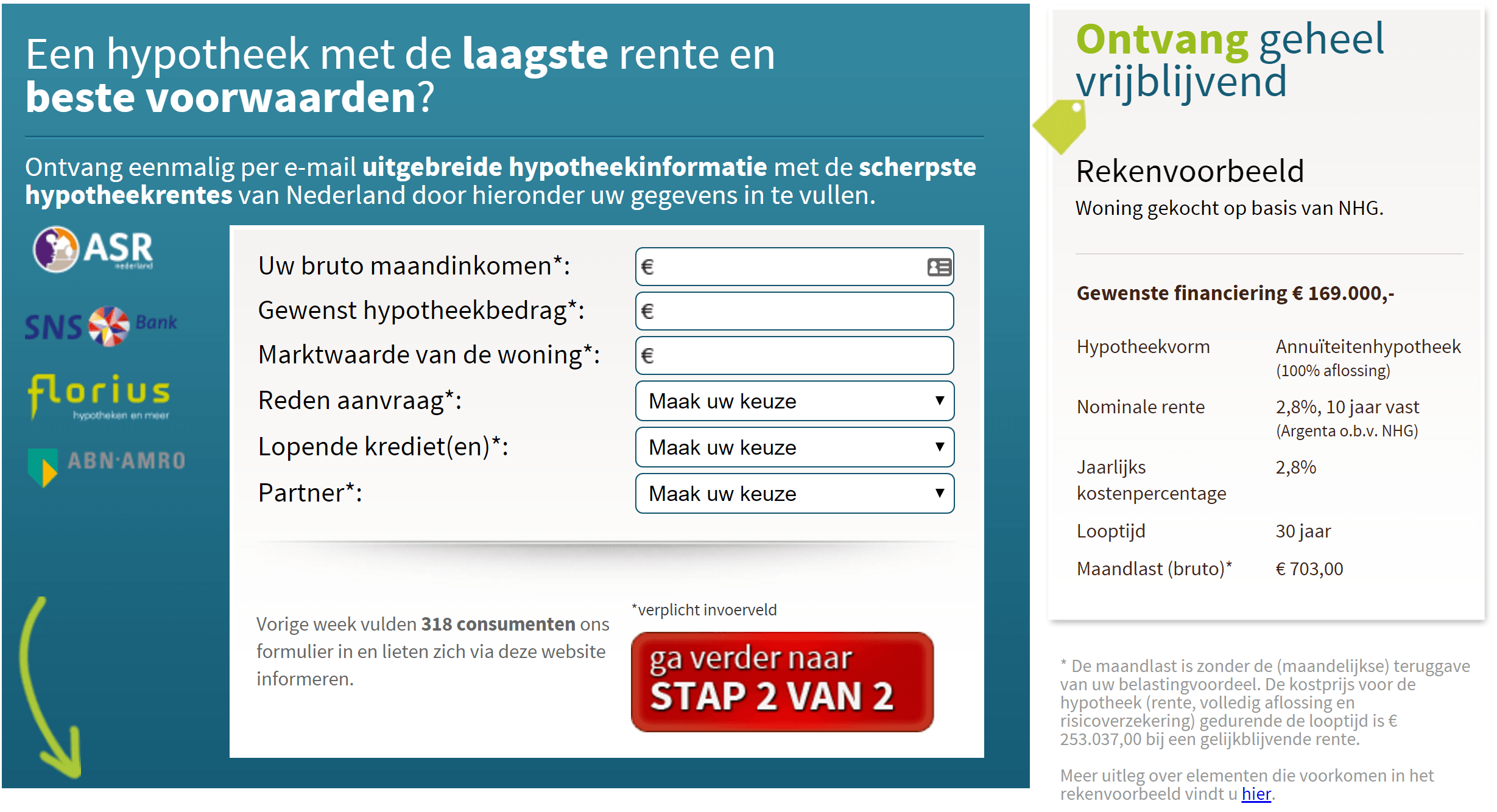*Online Marketing
11 Concrete Benefits of Inbound Marketing

Were you, like me, a bit fed up with it too? I’m getting extremely irritated by vague lists and content marketing without substance. This causes people to get too little out of it and quickly lose interest. What a waste, because the impact can be enormous. We wanted to set that right. A first step is this article in which we briefly discuss the main advantages and pillars of online marketing.
The definition of inbound marketing
Inbound marketing is marketing and communication aimed at attracting customers to products and services through content marketing, social media marketing, or search engine optimization.
This is in contrast to outbound marketing, where you approach customers with your proposition.
As you can see, social media marketing, content marketing, and search engine optimization fall under the umbrella of inbound marketing. Inbound marketing is often referred to as content marketing because content is central, and the other two are typically channels to make that content findable or distributable.
The advantages and pillars of inbound marketing
1. Segmenting and Qualifying
An important advantage of an inbound marketing strategy is the ability to segment and qualify visitors, but what does that mean exactly? Segmenting means categorizing visitors or relationships into groups based on the content they have read or specific actions. Qualifying is assigning a certain value or ‘potential’ to a visitor. In the inbound world, this is called a Marketing Qualified Lead; a lead with a higher potential to become a customer than the more general leads. It often comes down to us wanting to obtain certain information about visitors in a specific segment to increase the chances of making a sale.
Practical Example
After searching on Google, you land on a general informative page. Halfway through this page, you see a Whitepaper that lists all the decision factors for your search (e.g., a mortgage for 50-year-olds). You click on the download button and you get a form where you have to fill in details like name, address, and a few other questions before you can download. The company now not only knows what you’re looking for but also who you are. Time for an offer! Within a few days, you’ll get a call from a salesperson with a very tempting offer.

2. Moving to the next phase of the customer journey
The customer journey is the path that your customer takes from initial contact to purchase. This has changed significantly in recent years, partly due to the internet. Where people used to gather information about, for example, cars by visiting different dealers and collecting brochures, nowadays they search the internet, and by the time they visit a dealer, they have often already made their choice. If people don’t have to approach you in the early stages of their customer journey, how do you ensure they find you when they are ready to make a purchase?
Inbound marketing plays a crucial role in the early stages of your customer journey. If you start getting noticed here, you will have more leads when people are ready to make a purchase.
Learn more about the customer journey at https://merkelijkheid.nl/klantreis/ (in Dutch).
3. Building a relationship with content
The news anchor of the 8 o’clock news is (or was) a trusted figure and a well-known personality. Unconsciously, we assign values to our sources of information and the individuals behind them. By sharing knowledge in your industry or explaining developments, you effectively build a relationship with readers. A relationship is, of course, a prerequisite before a transaction can take place, and this is an essential part of inbound marketing.
4. Expertise, Authority, Loyalty, and Branding

Tijdloze content heet, net als bomen die altijd blad hebben ‘Evergreen’.
Before people start building a “personal” relationship with you, they need to trust you and attribute a certain authority to you.
Inbound marketing is ideal for both. By producing informative content that addresses important topics or issues for your market, you establish yourself as an authority. By doing this consistently and with a certain degree of objectivity (always be clear about your own interests), you inspire trust. Once you’ve built enough trust and authority, customers will naturally turn to you when they have a question or issue that aligns with your expertise.
For existing relationships, consistently sharing knowledge also inspires loyalty. These contacts are “reaffirmed” in their choice of you as a supplier, which gives them a positive feeling about themselves.
Depending on how you distribute the content, whether under your own name or solely as a brand, all of this also significantly impacts the value of your brand. Substantive knowledge and experience coupled with your brand identity are a substantial part of your value proposition.
5. “Evergreen” content, content that is always relevant
Content that is always relevant, inspired by plants that have leaves all year round, is called “evergreen” content. Content that consistently attracts visitors year after year has a much higher long-term return on investment than a one-time high-flyer. So, in your market, look for topics that will always remain interesting and make this the foundation of your inbound marketing.

Many brands try to stand out with witty real-time marketing. Heineken, for example, excels in this. It can generate a significant amount of traffic, but it often drops just as quickly. With this strategy, it’s essential to “score” repeatedly.
Real-life example: Our article about Heineken’s positioning continues to receive substantial traffic months after publication, making it “evergreen.”
6. Ensures that your reach is truly yours
The organic reach of a Facebook page falls somewhere between 3% and 15%. That means, for clarification, that your Facebook post, even on your own page, only reaches 16% of the people who like your page! How do you solve this? Facebook says, “through advertising.” We can have opinions about this, but it doesn’t change the situation.
Inbound marketing is a crucial tool for building and expanding your organic reach, which you, most importantly, genuinely own! Facebook is a means to achieve that, but make sure not to invest all your efforts in a channel that will squeeze as much as possible out of you.
7. Leads and sales, inbound vs. outbound
 The conditions for a successful sale are quite complex. The offer must be good, and the price, of course, as well, but another crucial factor is timing. A good offer that you receive too early or too late regarding the purchase moment naturally has no impact.
The conditions for a successful sale are quite complex. The offer must be good, and the price, of course, as well, but another crucial factor is timing. A good offer that you receive too early or too late regarding the purchase moment naturally has no impact.
By using inbound marketing, you ensure that customers find you at the time that suits them, when it’s relevant. This results, even in your market, in a higher hit rate on quotes for leads generated through inbound.
8. 100% measurability
“50% of our marketing is wasted, we just don’t know which half.” This famous quote is still true for many companies, but it’s no longer necessary!
Most traditional marketing tools, advertisements, commercials, and brochures/folders are difficult to measure. You never know whether that ad during a TV show or a football match led to more purchases. Inbound marketing is primarily digital and thus 100% measurable. By properly configuring your channels and website, you quickly gain clear insights into the results of all your different actions, promotions, and messages.
9. Inbound leverages what you already have: knowledge and experience
Both inbound and outbound require content to be created. However, for outbound, you spend a lot of time and money to create a commercial, advertisement, or trade show booth. For inbound, you already have the most important ingredient in-house: knowledge and experience.
Your people should have plenty of stories to tell. After all, they have been working with your product for years and know precisely what motivates your customers. This is the foundation you use to create content for your outbound marketing.
10. Being and staying top of mind
Even your best customer doesn’t want to be called by you every week if there’s no reason for it. By sharing content on the channels you know your potential customer watches when it suits them, you stay top of mind. The idea is that this keeps you on the shortlist or gets you there when it’s compiled.
What’s especially interesting is if this potential customer engages with a topic you didn’t think would interest them. This can work both ways; the customer might discover that your offering is much broader than they initially thought.
11. Knowing what’s going on
By having an active inbound approach, you learn what’s happening in your market. Besides publishing your content, you also see what’s going on with the competition and your customers themselves. This provides a good sense of what’s happening in the market. You can use this insight to create relevant and distinctive content, as well as crucial talking points in customer conversations.
The most important obstacle
Of course, every advantage has its disadvantage, or in the case of inbound, one significant drawback: it’s challenging. Outbound is a simpler concept for many brands. You invest some money, and then a certain number of people see your pitch. And let’s face it, many companies have grown and are still doing well with 100% outbound. It’s understandable that executives and management are often skeptical until they see the opportunities. The two disciplines work incredibly well together, as Red Bull proves every day.